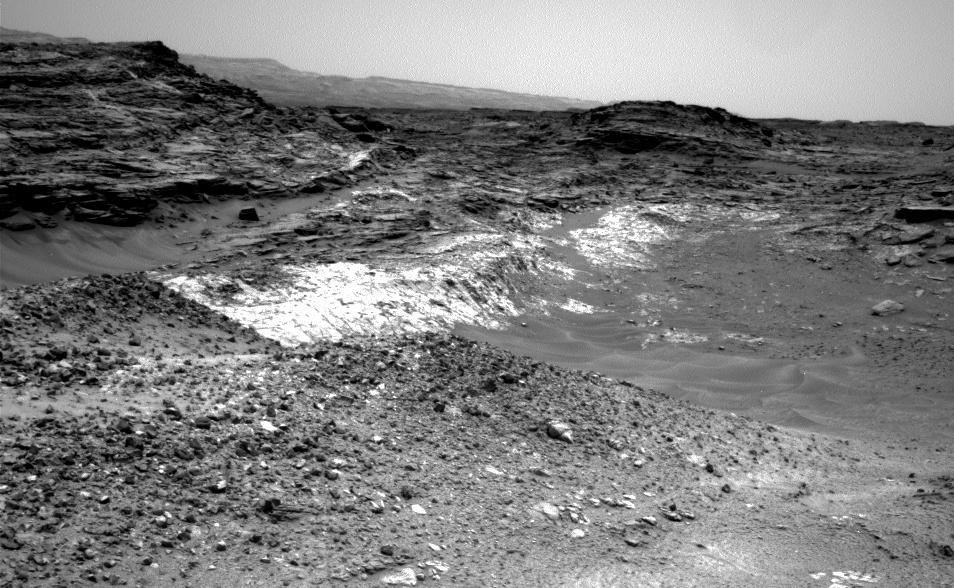
NASA's Mars rover Curiosity has found a new route to some interesting rocks after its original path proved too difficult to traverse.
Scientists want the car-size Curiosity rover to check out a "geological contact" where two different rock units meet. Curiosity tried to reach such a contact earlier this month, but the robot's six wheels slipped too much during three out of four drives between May 7 and May 13, NASA officials said.
"Mars can be very deceptive," Chris Roumeliotis, Curiosity's lead rover driver at NASA's Jet Propulsion Laboratory in Pasadena, California, said in a statement.
"We knew that polygonal sand ripples have caused Curiosity a lot of drive slip in the past, but there appeared to be terrain with rockier, more consolidated characteristics directly adjacent to these ripples," Roumeliotis added. "So we drove around the sand ripples onto what we expected to be firmer terrain that would give Curiosity better traction. Unfortunately, this terrain turned out to be unconsolidated material too, which definitely surprised us and Curiosity."
So the rover team decided to map out a new route using images captured by Curiosity and NASA's Mars Reconnaissance Orbiter, which has been circling the Red Planet since 2006. This alternate path would allow Curiosity to examine a similar contact to the west.

A 72-foot (21 meters) drive on Thursday (May 21), during which Curiosity climbed up a hill and dealt with 21-degree slopes, brought the rover close to this contact, NASA officials said.
Curiosity, which landed on Mars in August 2012, has been exploring the base of Mount Sharp since September 2014. The geological contact contains light-colored rocks similar to those that Curiosity has already studied near the mountain's base, as well as darker material less familiar to the rover team, researchers said.
Breaking space news, the latest updates on rocket launches, skywatching events and more!
The rover's main goal is to determine if Mars could ever have supported microbial life. Mission scientists have already answered that question in the affirmative, determining that the area near Curiosity's landing site was a habitable lake-and-stream system billions of years ago. The rover is now climbing up Mount Sharp's foothills, reading the rocks for clues about how the Red Planet's climate and surface conditions have changed over time.
Follow Mike Wall on Twitter @michaeldwall and Google+. Follow us @Spacedotcom, Facebook or Google+. Originally published on Space.com.
Join our Space Forums to keep talking space on the latest missions, night sky and more! And if you have a news tip, correction or comment, let us know at: community@space.com.

Michael Wall is a Senior Space Writer with Space.com and joined the team in 2010. He primarily covers exoplanets, spaceflight and military space, but has been known to dabble in the space art beat. His book about the search for alien life, "Out There," was published on Nov. 13, 2018. Before becoming a science writer, Michael worked as a herpetologist and wildlife biologist. He has a Ph.D. in evolutionary biology from the University of Sydney, Australia, a bachelor's degree from the University of Arizona, and a graduate certificate in science writing from the University of California, Santa Cruz. To find out what his latest project is, you can follow Michael on Twitter.
